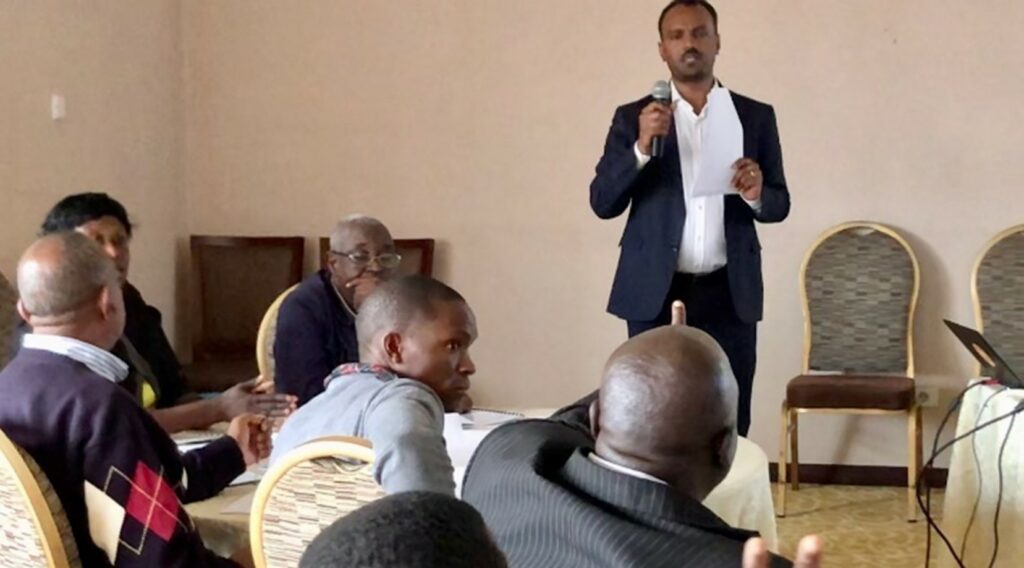Deliverable: Blended learning program, self-study, workshops
Did you know that for people with certain cancers, they can take your cells out of your body, fortify them to better fight cancer, and then put them back? This is a revolutionary new type of therapy called CAR T-cell therapy. This is a small but growing treatment for certain forms of cancer.
As you can probably imagine, administering such a therapy requires an entire health center to equip itself with the tools, processes, and skills to perform CAR T treatments. You have to be able to draw the t-cells, package them for shipping to the lab, and infuse the modified cells back into the body, all while providing care to the patient. You also need to follow the appropriate reimbursement procedures.
Asking doctors to change the way they practice
If you’re tasked with selling a new CAR T treatment to healthcare providers, you’re not just asking them to prescribe a standard drug product. You’re asking them to make significant changes to the way the practice operates. This is a highly complex sale that can involve as many as twelve different people influencing the buying process.
Preparing a sales force to make inroads bringing a new CAR T treatment to market requires a unique, rigorous training program that would demand a lot from learners. When learners have to master a highly complex body of knowledge and skills in a short time period, doing things to help them manage cognitive fatigue and motivation is paramount. Among other things, this means dialing the interest and engagement up to an eleven.
Managing cognitive fatigue with variety
This was our focus as we were training the sales team for a company bringing a new CAR T treatment to market. Our strategy was to create a highly varied set of learning activities, each of which is highly active and fun. To accomplish this, we partnered to build a solution which included (but was not limited to) the following key components:
Learning games:
The solution included a number of learning games, a “Who am I?” game in which they had to identify different sorts of stakeholders and collaborators based on a description of their roles. There was also a “Three questions” probing game, during which the learner would have only three questions to get to the bottom of a problem a fictional client was having.
Peer interviews:
Sales reps were organized into pairs. Each rep interviewed the other about three or four of their actual accounts using a structured interview guide. After interviewing each other, the reps then wrote out the main things they learned from their peers and how they intend to apply those lessons to their own accounts.
Simulations:
In one simulation, sales reps were given a series of customer problems, objections, or situations. The learner would then have to determine a) which member of the company team to involve in handling the situation, and b) which stakeholders at the account you would need to work with to bring the situation to resolution.
Work mat exercises:
Learners were given large work maps with blank process flows printed on them. They were given cards with process steps on them and asked to work together to arrange the process properly. Afterward, they were given challenge cards and asked to work together to identify the step where the challenge is most likely to occur. After completing the maps, the larger group reconvened for discussion.
Video critiques:
Learners watched videos of sales conversations, categorized each one as either good, better, or best, and then discussed and defended their categorizations as a group.
Teach backs:
Each learner was given a topic to research and then asked to give a short presentation on it and facilitate a Q&A session with the broader group.
Escape room:
This was a timed challenge with a subway theme. Working in small teams, learners had to get their patient onto the CAR T train and advance them to their destination – full disease remission. In keep with all escape rooms, they had to move from station to station solving various challenges. The nine challenges included things like putting together a competitor puzzle, solving a product riddle, and finding the problems in a set of account plans.
A historic product launch success
When it all came together, the learning experience was highly active, hands-on, and highly embedded in realistic workplace context. And it was a big success. In addition to being well received by the learners, the CAR T product went on to have the fastest product uptake of any product in its category to date.





